Results 2,521 to 2,530 of 12094
Thread: Anandtech News
-
01-10-13, 02:30 AM #2521
Anandtech: A Brief Overview of CES' Ultrabooks
I dropped by the Intel booth to see what they had on display, and as expected that had a full lineup of Ultrabooks from various manufacturers. We’ve covered many of these in some form already, but I wanted to grab some pictures and give a unified list of all the touchscreen Ultrabooks being shown at the Intel booth. From there we’ll move on to a discussion of the larger Ultrabook market and what it really means.
Gallery: Convertible Ultrabooks_thumb.jpg)
_thumb.jpg)
_thumb.jpg)
_thumb.jpg)
_thumb.jpg)
_thumb.jpg)
Starting with the convertible tablets, in no particular order we have the Lenovo Twist, Dell XPS 12 Duo, a Gigabyte twist-style offering, Lenovo’s Yoga 13, Toshiba’s Slider, and the Sony VAIO Duo 11 slider. Note that the recently announced Lenovo Helix and MSI S20 aren’t present, and likely quite a few other Core series convertibles are also missing, but at least that covers most of the options. The good news is that the vast majority of these convertibles have decent screens—many are 1080p IPS displays, which is really what they all need to be, but the Gigabyte at least is clearly a TN panel. The colors are still clearly off, and for the price we should be getting displays pre-calibrated by the OEM (*cough* Apple *cough*), but let’s steer clear of that topic for a moment.
Gallery: Ultrabook Touchscreens_thumb.jpg)
_thumb.jpg)
_thumb.jpg)
_thumb.jpg)
_thumb.jpg)
_thumb.jpg)
Moving over to the touchscreen Ultrabooks, again in no particular order we have the Dell XPS 13 Touch, Acer’s Aspire M, HP Envy TouchSmart, Lenovo U310 Touch, ASUS UX31A Touch, Samsung Series 7, and the Acer Aspire S7. (Note: I didn’t carefully note each of the laptop models, so I might have some of those wrong.) The overall quality and design of these Ultrabooks is hit or miss, with some having nice looking screens and others using cheap 1366x768 TN panels. All of them have touchscreens of course, but I can’t help but feel some of the OEMs are shooting their products in the foot before they even get out the door.
If you’ll pardon me while I go off on a short rant, making a thin touchscreen Ultrabook isn’t the holy grail of laptop computing. Some people will love touchscreen laptops and others won’t; some people love thin laptops and others don’t care all that much. That’s the way things are and the way they’ve always been: you can’t please all of the people all of the time. The problem is that where certain products are thin and have a good industrial design and sell well with high profit margins (I hate to keep saying this, but: Apple), it’s not just the thinness and the industrial design that makes them sell. It’s the entire ecosystem in the product, from the chassis and screen through the keyboard and touchpad; from the speakers and color quality to the battery life, solid state drive, and on to the operating system and apps.
Rare is the Ultrabook that actually gets all of these areas right—and in fact, I’d say that so far it doesn’t exist. There are good Ultrabooks with IPS panels, but they’re not factory calibrated to display accurate colors. There are Ultrabooks with touchscreens, but several that I’ve played with also have touchpads that just don’t work as well as they should. By requirement, all Ultrabooks need some form of solid state storage, but we have pure SSD solutions with good controllers, pure SSD solutions with at best adequate controllers, and hard drives with SSD caches that in many cases are too small to be beneficial. Not everyone is going to want or need every aspect of their next laptop/Ultrabook to be “perfect”, but when we start getting into the $1200+ price range, the number of cut corners and compromises needs to approach zero. To create a premium product worthy of a premium price, you need all of those things—and when you have products that cost half or even a third as much, it takes serious convincing to get people to invest in premium offerings, especially when those offerings are still flawed. But it’s more than just matching what Apple is doing, because even if you have the perfect Windows alternative to the MacBook Pro Retina, the fact is that you’re still not going to be able to charge Apple prices and move the same amount of units.
Out of all the Ultrabooks I saw at Intel’s booth (or elsewhere at CES), I think the current best candidates are on a short list, and all of them still have potential issues. Dell’s XPS 12 Duo is quite cool and works better than I expected, but it’s a bit thick for a tablet and the colors out-of-the-box are very much not correct—and in fact, none of the Ultrabooks I’ve seen look like they’re anywhere near having an out-of-the-box DeltaE of less than four with a color gamut that at least covers all of sRGB. (DeltaE of 10 with spikes up to 15-20 and a <55% color gamut? Yes, we have that!) Frankly, anything with a 1366x768 TN touchscreen never should have gotten past the prototype stage without getting a better display. Acer and ASUS have potential issues with their storage subsystems (SanDisk controllers and/or RAID 0 SSD arrays), and the touchpads on every Ultrabook I’ve used for more than a few minutes are still lacking. Lenovo’s ThinkPad Helix is still high on my list, but the latching mechanism gives me pause. Samsung’s Series 7 touchscreen Ultrabook might be the best of the breed when we get right down to it, but I haven’t spent enough time with it to say for certain.
So after looking at more than a dozen different Ultrabooks, my short list has Samsung, Lenovo, Dell, and ASUS still hanging around—and most of the MSRPs are still several hundred dollars too high to warrant a strong recommendation. I’m sure all of Intel’s partners would love for Ultrabooks to become 50% or more of the global PC shipments, but until we deal with some of the above issues I just can’t see that happening. For the time being, Ultrabooks are here to stay and there are going to be plenty of people that like what the overall platform delivers, but there are even more people that will be disenfranchised by the high prices, missing features, or other issues and they will go looking at other alternatives. Perhaps they’ll end up with another budget laptop, or maybe they’ll make the switch to the growing tablet market. Whatever happens, the next few years should prove interesting.

More...
-
01-10-13, 05:30 AM #2522
Anandtech: Deepcool: Little Fish Don't Stay Little Forever
I've typically been a big proponent of getting smaller vendors exposure if they have some great products on hand, and my brief meeting with Deepcool suggested to me that there's a lot of potential there. Deepcool is a startup based out of Beijing with a few solid-looking, well-priced heatsinks to their credit.
The coolers aren't super exciting, but many have direct-touch heatpipes and all have compelling prices; the 400 in the bottom right corner looks to be competitive with the Cooler Master Hyper 212 line with its $29 price tag, and Deepcool is slowly making inroads towards distribution in the United States with vendors like NewEgg. They're also working on opening an office in Los Angeles, California.
Deepcool also had on offer a line of fans, but interestingly their 140mm fan still uses standard 120mm mounts, making it an interesting upgrade opportunity for end users who want to get a little more cooling power in their system without having to run a fan at a higher speed.
Finally, Deepcool had this monster on offer. This is a heatsink with eight individual heatpipes (no direct touch cooling), and should provide pretty stellar cooling power when paired with the right 120mm fans.
As with many smaller companies it's a wait and see approach, but we'll be evaluating Deepcool products as they become available to let you know if you should be keeping an eye on them.
 
More...
-
01-10-13, 08:30 AM #2523
Anandtech: Micron/Crucial Announces M500 SSD Line of SSDs
Micron/Crucial briefed us on their new M500 line of SSDs, which upgrades the controller to the Marvell 88SS9187-BLD2 along with moving to 20nm Micron MLC NAND. Along with the NAND process shrink Micron is bringing higher capacity SSDs down to previously unheard of prices—particularly for what should be high performance, high quality SSDs. The M500 line will launch with 120/240/480/960GB models, in 2.5”, mSATA, and M.2 (formerly NGFF) form factors. Full pricing information isn’t available yet, but Micron is promising the 960GB drives will cost under $600. We’ve basically seen the same sort of drive upgrade from Plextor already with the M5 Pro, though both Plextor and Micron of course provide their own customized firmware. Note also that both the Micron and Crucial versions will use the same M500 branding, which will hopefully alleviate any confusion this time around. Here are the core specs for the four capacities.
There are a few key points worthy of note. One is that the M500 posts lower transfer rates and IOPS than the M5 Pro, though of course these are all paper specs so take them with a grain of salt. The other interesting item is that Micron is now going with more overprovisioning than on their previous model SSDs. We’ve seen the effect of spare area in our recent testing, so the move from 7% spare area (the difference between GiB and GB) to 14.5% spare area will improve the worst-case performance. Another item to note is that the 2.5” enclosures are now all 7mm thick, and they ship with a free 9.5mm adapter.Micron / Crucial M500 Specifications Controller Marvell 88SS9187 NAND Micron 20nm MLC NAND Form Factor 2.5", mSATA, M.2 2.5", mSATA, M.2 2.5", mSATA, M.2 2.5" Raw NAND Capacity 128GiB 256GiB 512GiB 1024GiB User Capacity 120GB 240GB 480GB 960GB Sequential Read 500MB/s 500MB/s 500MB/s 500MB/s Sequential Write 130MB/s 250MB/s 400MB/s 400MB/s 4K Random Read 62K IOPS 72K IOPS 80K IOPS 80K IOPS 4K Random Write 35K IOPS 60K IOPS 80K IOPS 80K IOPS Warranty 3 years
At this point, we’re now getting very close to the limits of the SATA 6Gbps interface, so some performance improvements over the previous generation M4 aren’t all that huge. Read speeds have improved from 415MB/s on the M4 series and write speeds are up from 260MB/s; on the other hand, 4K IOPS almost double from 40K/50K read/write, so random performance should be substantially better. Reliability has been quite good with Micron/Crucial drives over the past couple years, and the new drives will hopefully continue that legacy. Availability should be Q1 2013,  and we’ll have full performance reviews when we get samples.
Gallery: Micron/Crucial Announces M500 SSD Line of SSDs






More...
-
01-10-13, 12:30 PM #2524
Anandtech: Qualcomm MPQ8064 Reference Design Shown Off at CES 2013
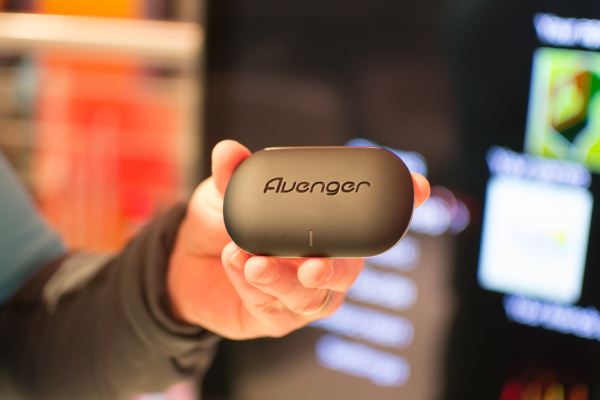
The Avenger MPQ8064 Reference DesignTucked away in the Qualcomm both were a few reference designs intended to show off the potential of the Snapdragon S4 Prime SoC (MPQ8064), a derivative of the APQ8064 with four Krait cores and the Adreno 320 GPU and revealed at CES 2012. In-house Qualcomm built out a large set-top box that apes their MDPs with every connectivity and device feature you could imagine. The other two were designed by partners as proof of concepts, and are quite attractive. The Avenger (pictured above) is absolutely minute, but fully functional with HDMI out and microUSB for power and storage, along with microSD storage. LG Innotek had a more traditional mock-up that could still look good sitting in a living room. 
All of these devices run Qualcomm’s own Android build, designed to show off the hardware capabilities while also marrying them to some of the software innovations they’ve been working on. One technology they’ve fleshed out quite nicely is AllJoyn. When I first learned about AllJoyn it seemed to ape a lot of other wireless device awareness solutions by offering sharing of media between phones, tablets, TVs and the such over a shared wireless network (think DLNA). There’s much more to it than that, though. 
 
One compelling demo involved a video call that was initiated between one of their development handsets and their development tablets. Once established, AllJoyn was used to discover other video call capable devices and then to transfer one end of the call from the handset to the MPQ8064 reference device. The effect was seamless, and would be great for extending a video call so that the entire family can participate, all gathered together on a couch. And just to show off how much compute the SoC has, a 1080p clip was playing at the time, and both ends of the video call were overlaid on the screen, while UI elements were manipulated without a stutter or lost frame on any item on the screen. 
Since all of these demos were proofs of concept, it’s still going to be some time before we see this tech trickle into products, but if you’ve ever wondered what a quad-core set-top box might be like, the answer is “Pretty good.”

More...
-
01-10-13, 04:30 PM #2525
Anandtech: QNAP Unveils TS-x70U-RP NAS Line Up and Turbo NAS 3.8.1
QNAP is one of the NAS vendors known for providing affordable 10 GbE ready solutions, and they are continuing the trend with the TS-x70 series. At CES 2013, they are launching the TS-870U-RP 8-bay and TS-1270U-RP 12-bay models for cost effective NAS and iSCSI (IP-SAN) solutions. Both of them are 2U rackmount solutions. As with any rackmount storage product nowadays, the units are VMware, Citrix and Hyper-V ready. Based on a dual-core Intel Celeron processor running at 2.4 GHz, the units come with 4 GB of DDR3 by default (can be user upgraded to 16 GB). An important point to note is that ECC memory is not supported. Both units have dual GbE ports and two spare PCIe slot which can be used to add multi-port network cards (1 GbE or 10 GbE). QNAP claims that with 10 GbE cards, the units can provide more than 1800 MBps with 180K+ IOPS.
TS-870U-RP Hardware (The TS-1270U-RP has the same height, with the top row with the QNAP logo replaced by four drive bays)Inside the TS-870U-RPIn addition, we have a new firmware release in the Turbo NAS 3.8.1 with updated support for IP cameras in the Surveillance Station Pro. The interface has also been updated along with some multimedia apps.
With the increasing popularity of IP cameras in the business as well as home consumer space, NAS vendors are also looking at creating specialized Network Video Recorder units. At CES, QNAP is introducing 2,4 and 6 bay models catering to this market segment in the VioStor VS-x100 Pro+ series. With built-in hardware decoding, surveillance footage can be viewed without going through a PC. QNAP is also preparing a Linux-based turnkey CMS-2000 central management system for PCs to monitor up to 1024 channels.
The final announcement from QNAP for CES was the enabling of the HDMI output on the tower NAS systems based on the Atom D2700 (TS x69L). With an inbuilt hardware decode accelerated XBMC client, QNAP is positioning the units as media players also.

More...
-
01-10-13, 04:30 PM #2526
Anandtech: Synology at CES 2013: DSM 4.2 and the ioSafe N2
We met up with Synology at CES today, and the main focus was on the recently released Disk Station Manager 4.2 firmware. Different NAS vendors take different approaches to accessing a NAS over the Internet. For example, Western Digital and Seagate set up the connection through their own servers, but most of the vendors opt for the port forwarding method. While it is straightforward for tech-savvy folks, it is not a simple plug-and-play option for the general user (which is why Western Digital and Seagate avoid it). In the recently reviewed LaCie 5big NAS Pro, LaCie tried to automatically forward the necessary ports using the uPnP port forwarding method (which sets up the port forwarding rules in gateways which support it). It didn't particularly work well with the NAS behind a couple of switches. Synology is also aiming to tackle the problem with an improved Quick Connect. The claim is that there is no need for port forwarding to enable remote access, and we will check out how this works as soon as we get back from CES. It appears that Synology uses a relay mechanism wherein the QuickConnect ID is made available to a Synology server for the initial handshake.
Other updates in DSM 4.2 include DS cloud updates for better iOS support, an improved Package Center and an updated Cloud Station 2 allowing for nearly unlimited accounts and sync folders. The apps also get some updates with DS Video expanding mobile platform support, DS Photo+ getting auto-sync for iOS devices and Video Station going the HTML5 route to work without browser plugins and Audio Station support for streaming to Bluetooth speakers.
From the SMB / SOHO perspective, DSM 4.2 adds support for Amazon's Glacier cloud backup service. Synology High Availability (SHA), a scheme in which one NAS acts as an active server and a second one takes over seamlessly when there is a failure in the active one (because the two servers are being synced continuously), is now available for all x86 models. Synology also indicated that all the x86 models are VMware vSphere 5 VAAI and Windows Server 2012 certified.
ioSafe CEO Rob Moore with the ioSafe N2The ioSafe N2 also had a place of honour in the Synology booth. We covered the announcement of the ioSafe N2 back in September. It is basically a Synology DS213 motherboard in a chassis designed by ioSafe for disaster resistance while also allowing users to replace the hard disks if necessary. ioSafe had promised that the unit would ship by January, and true to their word, our review unit shipped right on time. We will be taking a closer look at the unit later this month.

More...
-
01-10-13, 04:30 PM #2527
Anandtech: Crucial Demonstrates DDR4-2133 Modules
We’re not likely to be running DDR4 any time soon on desktops, and even most laptops are probably over a year away from getting the upgrade, but now is the time to prepare for the shift. To that end, Micron (Crucial) has a DDR4 demonstration running at CES 2013. The system is an Intel test platform with undisclosed internal hardware, affectionately (or perhaps not) referred to as the Frankenstein Box. My guess is that there might be an Ivy Bridge, Sandy Bridge-E, or current-gen Xeon running in the box with a converter board of some sort to allow the DDR4 to talk to the DDR3 on-die controller (similar to the RDRAM to SDRAM converters we saw back in the Pentium 4 Rambus days), but how they’re running it right now isn’t particularly important so much as the fact that they are able to run Windows. It’s just as possible that the box has an unannounced next generation Xeon with a DDR4 controller. But I digress….
The systems wasn’t open for inspection, but Crucial had an oscilloscope showing the signals on the test unit and a bootable Windows 7 platform running a bouncing balls simulation, which is what we usually see with early/prototype/Frankenstein systems. The memory was running at 2133MHz, apparently with similar timings to what we currently see with DDR3-2133, so at launch the base DDR4 speeds are going to be around twice as fast as what we saw with DDR3. The test platform unfortunately is limited to 2133MHz as the maximum clock; Crucial said they’re seeing 2400-2800MHz without any trouble, and the JEDEC DDR4 specifications currently go up to DDR4-3200. Worth note is that DDR4 makes some changes to help reduce power use, including dropping the standard voltage to 1.2V (down from 1.5V with DDR3), and we’ll likely see low voltage and ultra low voltage DDR4 in the 1.0-1.1V range.
The standard memory chips are now 4Gb compared to 2Gb for most DDR3, which makes 4GB single-sided and 8GB double-sided DIMMs the starting capacity. The initial target devices will be servers where the improved memory density and power savings are needed most, effectively doubling the amount of RAM we’re likely to see at similar price points/configurations to the current generation DDR RAM. Crucial will be releasing a full portfolio of products based off the memory chips, including RDIMMs, LRDIMMs, SO-DIMMs, and UDIMMs (standard and ECC). Mobile and desktop adoption of DDR4 is expected to occur in 2014. One change Crucial pointed out with their UDIMMs can be seen in the photo above: the edge with the 284 pins is no longer perfectly straight. The idea is that when you insert a DDR4 DIMM, it will require less pressure as you’ll only be pushing in about half of the pins at a time.
Besides the DDR4 demonstration, Crucial had a display showing their various memory modules over time, from DDR through DDR4. It’s always fun to see how far we’ve come over the past eight or so years. At the top we have a DDR DIMM with 184 pins—state-of-the-art circa 2001/2002. Launch speeds were DDR-200 (PC1600), with capacities of 128MB to 1GB being typical over the life of the product. DDR2 moved to 240 pins around 2003, launching at DDR2-400 and moving up to DDR2-1066 by the end of its life cycle; typical capacities ranged from 256MB to 2GB. 2007 brought about the advent of DDR3, and while there are technically DDR3-800 parts, for the mainstream market DDR3 started at 1066 and has officially moved up to DDR3-2133; capacities are generally in the 512MB to 4GB range, with 8GB being the maximum. And last we have DDR4, launching by the end of the year. If the pattern continues, we should see DDR4-4266 by the time DDR5 memory is ready for mainstream use and capacities will start at 2GB and likely top out at 16GB (possibly more) per module.
Gallery: Crucial Demonstrates DDR4-2133 Modules_thumb.jpg)
_thumb.jpg)

More...
-
01-10-13, 10:30 PM #2528
Anandtech: ROCCAT's Power-Grid Snaps the Switchblade
I had a chance to briefly visit with ROCCAT (and hope to get some of their gaming mice and keyboards in for review soon) and walked away a bit stunned by what they were working on. What portended to be a meeting about high quality keyboards and mice turned out to be much more.
Their first product on hand was a mechanical keyboard which featured per-key programmable lighting along with assorted lighting effects and, happily, a wrist rest. Their Ryos mechanical keyboard includes audio pass-through and a dual port USB 2.0 hub, and actually includes dual ARM processors to handle all of its functionality.
What really blew me away, though, was the software solution they dubbed Power-Grid. Power-Grid is a fairly robust system monitoring application (although it's missing desperately needed GPU monitoring hooks), but it shines both in its extended functionality and the way that functionality becomes available to you...on your iPhone or Android phone. The Power-Grid phone app works over Wi-Fi, and essentially feeds system monitoring, instant messages, RSS feeds, and volume control for your PC to your phone, essentially adding a Razer Switchblade style UI to a touchscreen you already own.
That would be cool in and of itself, but where I think Power-Grid really takes the cake is the interface. Custom software solutions from companies not named Apple can tend to be very hit or miss, and this is doubly true of peripheral manufacturers. Yet Power-Grid's configurable interface is both attractive and incredibly intuitive. Even better, it can be used to create shortcut buttons to launch PC applications from your phone, and they even demonstrated an internal profile for Skyrim one of their developers put together in twenty minutes. That profile was essentially a 4x4 grid of shortcuts for the game that would toggle inventory, arm/disarm, running, and more.
What makes Power-Grid so attractive to me is the combination of a stellar UI and the fact that it explicitly does not demand investment in a hardware ecosystem the way something like Corsair Link might. If you have a smartphone and ninety-nine cents, you'll be able to use Power-Grid. ROCCAT's software makes use of things you already have, and it cheaply and effectively adds functionality to your system.
The beta is available on their site and worth checking out.

More...
-
01-10-13, 10:30 PM #2529
Anandtech: Corsair Goes Big With Obsidian 900D; Updates Peripheral Lines
This CES, Corsair opted not to have a standard booth or suite. Instead they held a press event prior to CES proper, and unfortunately I wasn't able to attend. That disappointment is ameliorated somewhat by the fact that what was announced was the very definition of the word "flagship."
After starting with the Obsidian 800D enclosure and then gradually trickling down their designs to the eventual (and unfortunately underwhelming) Carbide 200R budget case, Corsair's gone back to the top and produced a new king of the castle in the Obsidian 900D. The 800D was an enthusiast chassis in its own right, but the 900D is another beast entirely, holding court with the likes of giants like the Azza Fusion, Thermaltake Level 10 GT, and perhaps most directly, the Cooler Master Cosmos II.
Even Corsair's own site admits the 900D is overkill, but that's really what the top dog on the product stack should be. The 900D features nine 2.5"/3.5" drive bays, three of which are hotswap, along with four 5.25" drive bays, and support for up to two power supplies and a staggering fifteen fan mounts. Basically, it's real big. We're hoping to have a review unit on hand before the end of February.
The 900D was the biggest announcement, but Corsair has also updated their gaming peripheral lines with a new keyboard and two new mice. The Vengeance K90 keyboard has been my weapon of choice for a long time; despite the spare use of rubber dome switches in an otherwise mechanical keyboard, the Cherry MX Red switches are fantastic, the wrist rest comfortable, and the keyboard's design is sexy enough to make Vivek blush.
From the looks of things, the K95 steps the K90's game up. Corsair continues to exclude a shroud in favor of letting the keys hover over the backplate, giving the keyboard a unique look and allowing it to be kept clean easily. The K95 also benefits from Cherry MX Red switches under every key, and has per-key configurable backlighting. Along with the K95, Corsair has updated the M60 and M90 mice to M65 and M95, but these refreshes are slightly less exciting, primarily updating the 5700dpi sensors to 8200dpi sensors with virtually no changes to the designs.
Finally, we have the Voyager Air and Flash Voyager GT Turbo. Corsair claims the Flash Voyager GT Turbo is the fastest USB 3.0 thumb drive on the planet, available at 32GB for $49, 64GB for $89, and 128GB for $179. The Voyager Air is a little more exciting (and a lot more flexible); this portable hard drive can be connected to via USB 3.0, Wi-Fi, or Gigabit Ethernet, essentially able to be used as a NAS and source for streaming video to all major platforms. It will come in capacities of 500GB for $199 and 1TB for $229.

More...
-
01-10-13, 11:00 PM #2530
Anandtech: CoolerMaster: New Storm Scouts, Crashing into Eisbergs, and Cherry MX Gree
While new products may have actually been a bit skint from the usual suspects at CES 2013, CoolerMaster has generally been reliable to provide new kit, and this year is no exception. Their engineers are nothing if not aggressively creative, but this year promised some particularly exciting hardware.
We missed the boat on reviewing the Storm Scout II enclosure, but a special "Ghost" edition is on the way and we'll be reviewing that along with their unique, boxy HAF xB case. I'm personally particularly interested in checking out the HAF xB, which is a more cube-shaped ATX case that actually stacks the motherboard and components into a separate compartment above the power supply and storage. I had a chance to see this case behind closed doors last year, and seeing it materialize on the market is exciting.
When I handled the radiator roundup, comprised of four new Corsair closed-loop coolers and two new NZXT closed-loop coolers, a couple of you mentioned CoolerMaster's impending Eisberg coolers. The good news is that the Eisberg is almost upon us, and the closed-loop cooler market is really starting to heat up. I'll resist making the obvious joke, but I'm keen to point out that the Eisberg line feature larger pumps and, especially important, copper radiator fins instead of the aluminum ones commonly found on existing products. The 240mm Eisberg in particular looked to be an absolute monster, and you can bet we'll be getting that in for review soon.
It's an amusing moment when a vendor catches you off guard with a product you think you already know about, but that's exactly what happened with CoolerMaster's new Cherry MX Green based keyboards. I thought the rep was talking about the lighting, but the switches themselves are actually a somewhat rarefied Green model different from the existing ones, and CoolerMaster has exclusive distribution rights in the States. So what's the MX Green like? My limited time with it suggested a switch that featured the same enjoyable typing feedback of the MX Blue, but was much more responsive for gaming. I've found myself pretty much swearing by the MX Reds for all-purpose use, but the MX Green may persuade me.
My media kit is languishing in the bowels of McCarran right now, but when I have access I'll update this post with images.

More...
Thread Information
Users Browsing this Thread
There are currently 17 users browsing this thread. (0 members and 17 guests)




_575px.jpg)



 Quote
Quote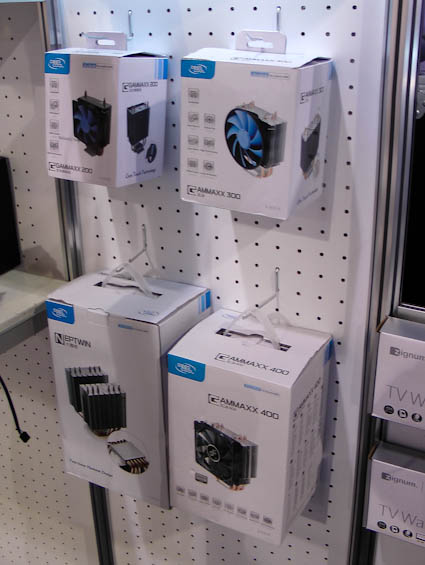
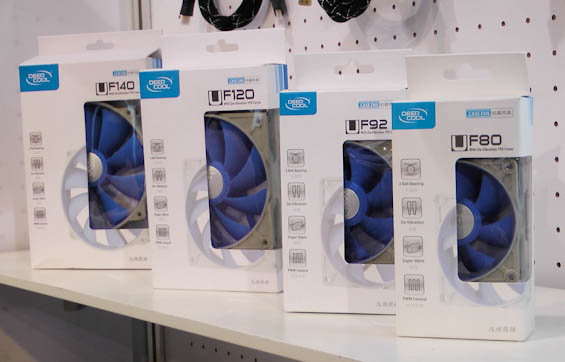
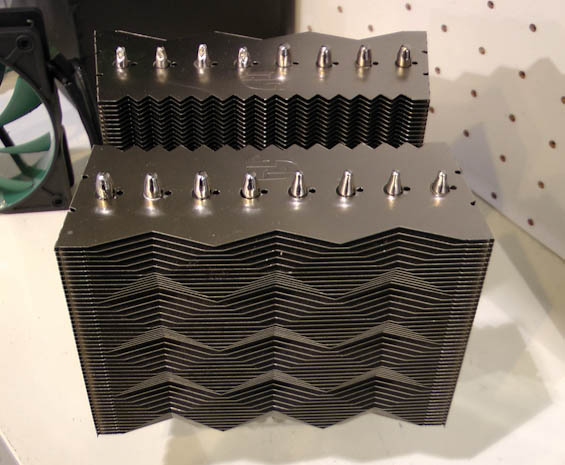
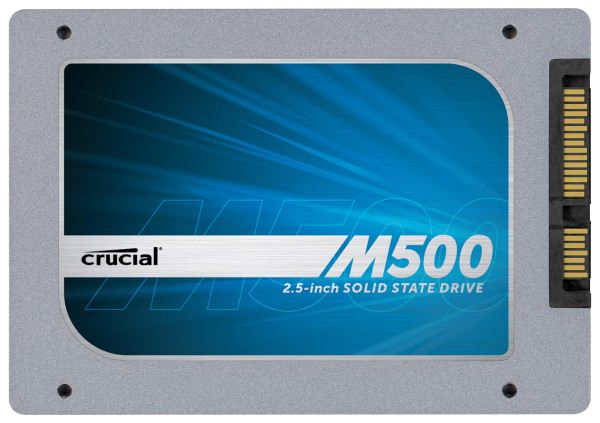
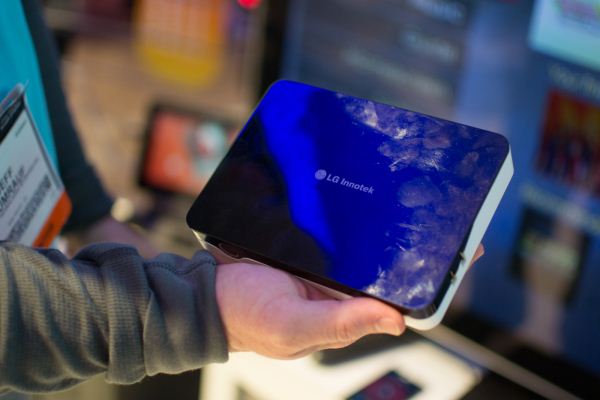
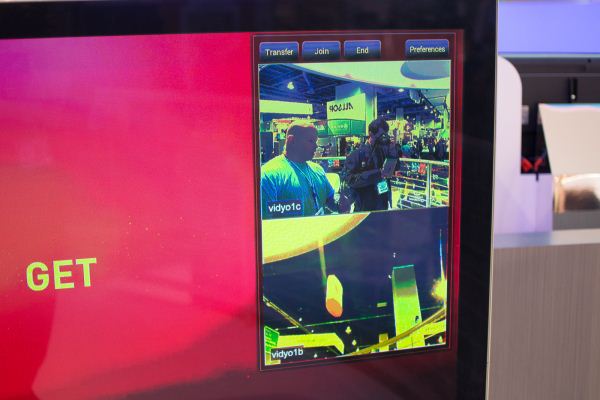
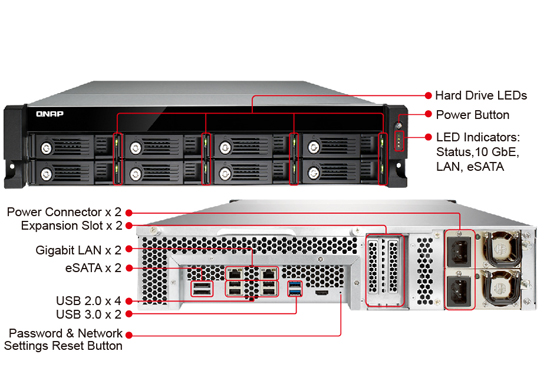
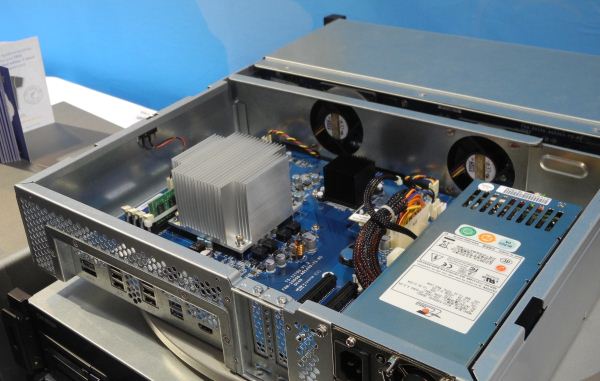
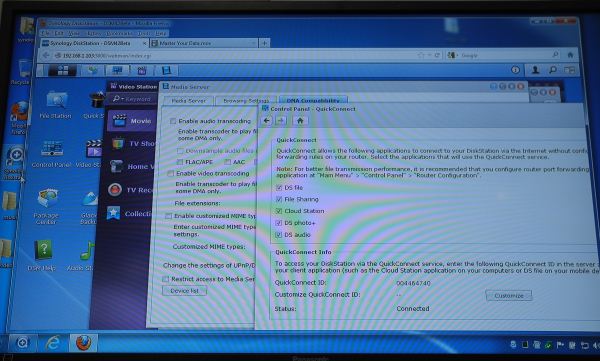

_575px.jpg)
_575px.jpg)

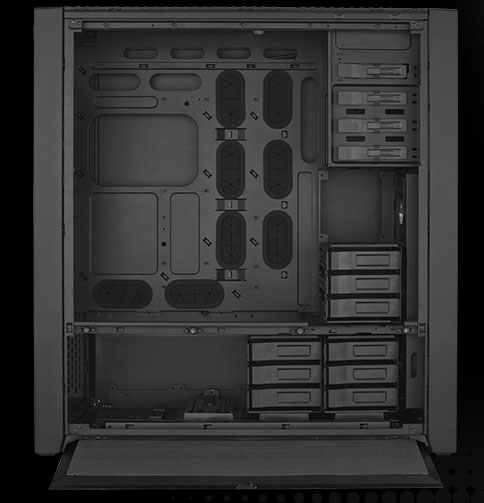
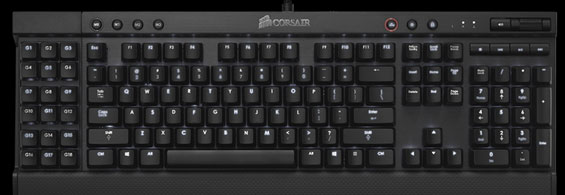
















Bookmarks